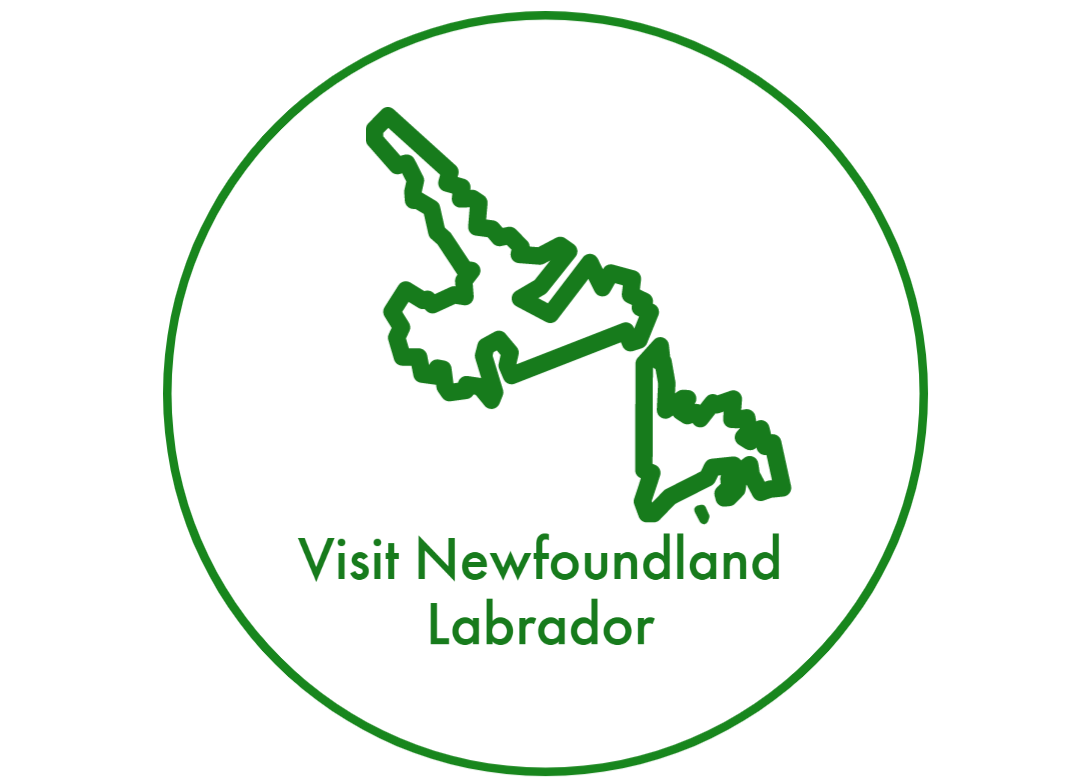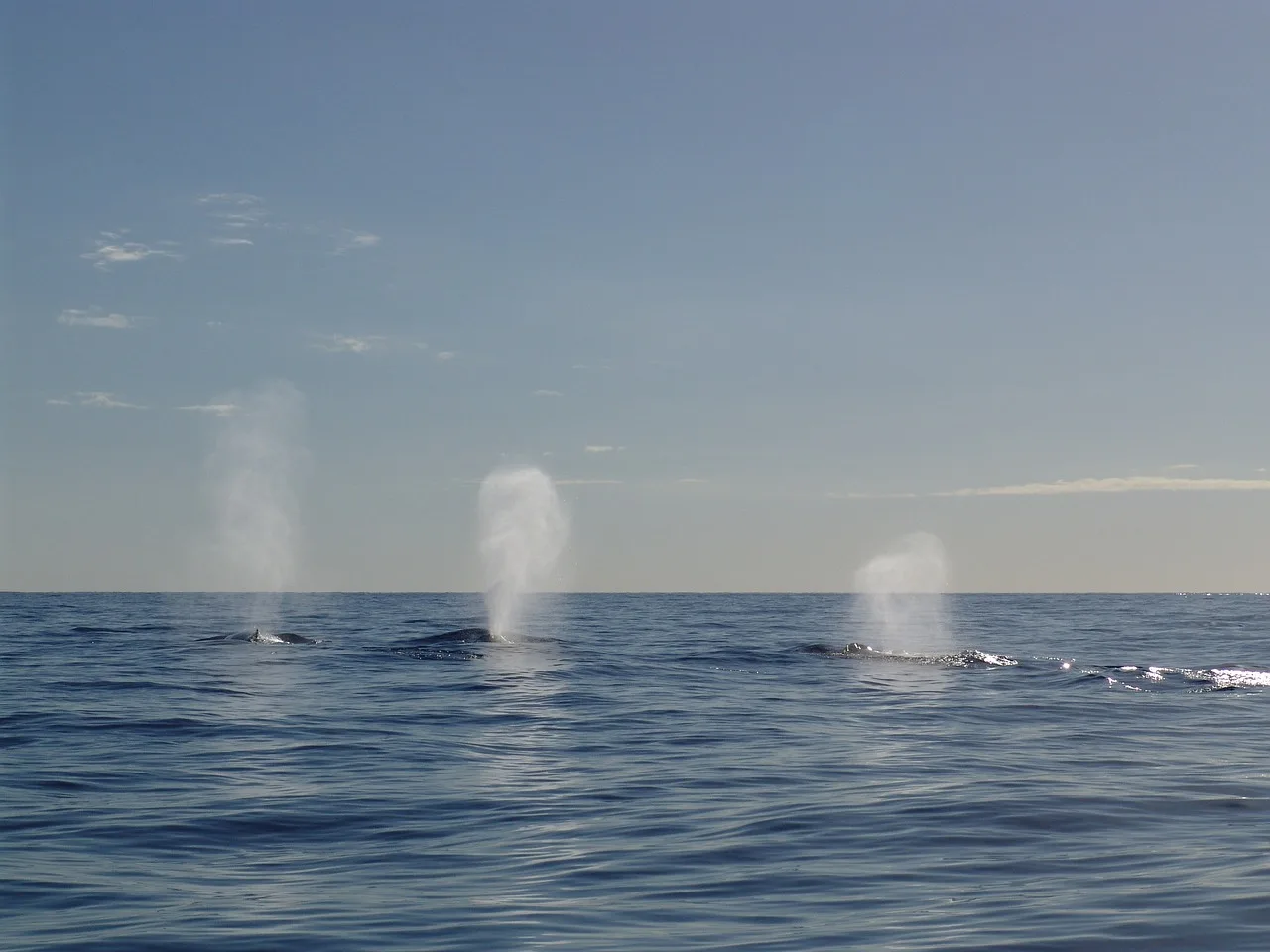The Best Spots and Seasons to Observe Majestic Whales in Newfoundland and Labrador
Let’s Discover the Best Spots and Seasons to Observe Majestic Whales in Newfoundland and Labrador. Whale watching is an inspiring experience that allows us to witness the beauty and grandeur of different whales in their natural habitats. Newfoundland, which is the most eastern province coast in Canada, and rises in the middle of the Atlantic Ocean, offers some of the most incredible opportunities for whale watching.
Newfoundland and Labrador is renowned for its diverse whale populations, including humpback whales, orcas, and minke whales. This comprehensive guide will delve into the best spots and seasons to observe these majestic creatures and provide the information you need for an unforgettable whale watching adventure.
Newfoundland and Labrador: A Whale Watching Paradise
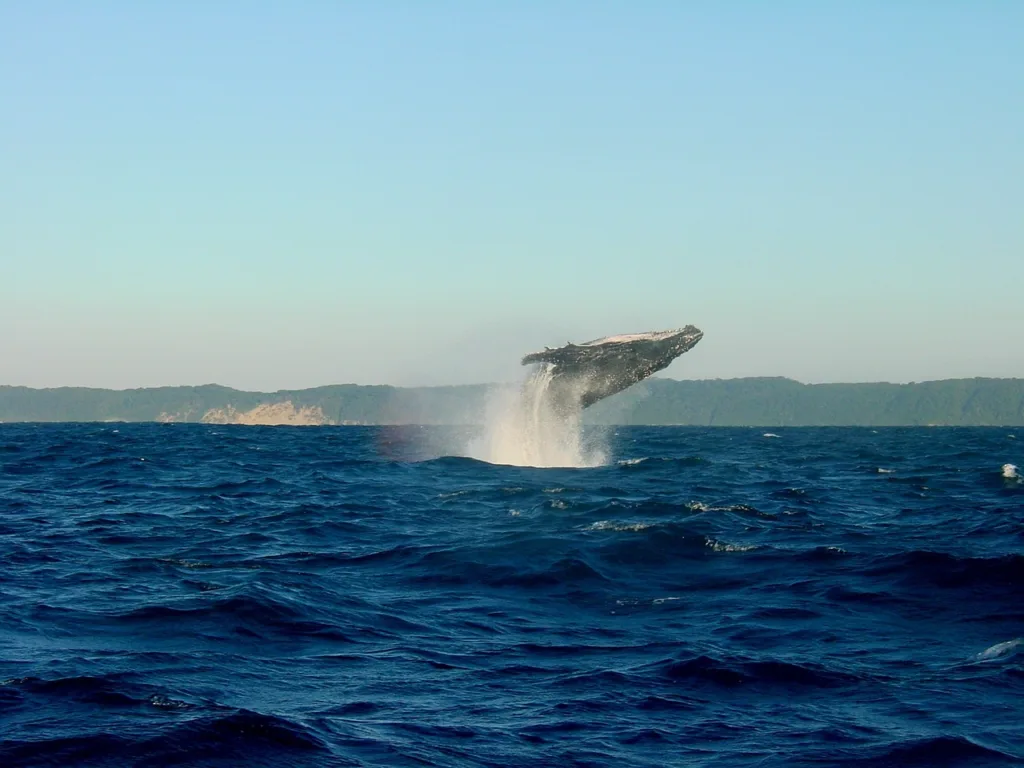
Newfoundland and Labrador is blessed with abundant marine animals, making it a prime destination for whale enthusiasts. Its rugged coastline, deep fjords, and rich feeding grounds attract a variety of whale species. Humpback whales, famous for their acrobatic breaches and haunting songs, are a common sight along the coast.
Orcas, (AKA) killer whales, are apex predators that can be spotted hunting and socializing in these waters. Minke whales, one of the smallest, often feed close to the shore.
Best Spots for Whale Watching in Newfoundland and Labrador
More Newfoundland and Labrador Travel Guides
- A Guide to Experiencing the Thrills of Newfoundland Whale Watching Season
- How To Best Experience Newfoundland Whale Watching Season
- How to Discover Icebergs in Newfoundland
- Where Big icebergs off the coast of Newfoundland come from
- How To Experience 500,000 Colorful Puffins in Newfoundland
- How To See both Whales and Puffins in Newfoundland
- How to Best Enjoy Whale Watching in Newfoundland and Labrador
2.1. Bay Bulls and Witless Bay Ecological Reserve:
Located just a short drive from St. John’s, Bay Bulls and the nearby Witless Bay Ecological Reserve offer exceptional opportunities to observe humpback whales. The reserve is the largest puffin colony in North America, making it a birdwatcher’s paradise. Discover the Wonders of the Ocean with O’Brien’s Whale & Bird Tours or Gatherall’s Puffin & Whale Watch in Bay Bulls. Book Now for an Exhilarating Wildlife Experience!
2.2. Trinity Bay:
Trinity Bay is another fantastic spot for whale watching, particularly for sightings of orcas. These powerful predators frequent the area, especially during the summer months when the waters are rich in food sources. Embark on an Extraordinary Adventure in Trinity Bay. Join Trinity Eco-Tours Today!
2.3. St. Anthony:
If you’re hoping to encounter the massive giants of the sea, St. Anthony is the place to be. This region is famous for its encounters with icebergs and enormous humpback whales. The annual Iceberg Festival is a popular event that celebrates the unique natural wonders found in this area.
2.4. Twillingate:
Known as the “Iceberg Capital of the World,” Twillingate is a great place to witness icebergs and an excellent location for whale watching. Humpback whales are frequently spotted here during their annual migration.
2.5. Cape Spear:
Cape Spear, the easternmost point in North America, offers the most breathtaking views of the Atlantic Ocean and is an ideal vantage point for observing migrating whales. Humpbacks and other species can often be seen passing by this rugged coastline.
The Best Seasons for Whale Watching
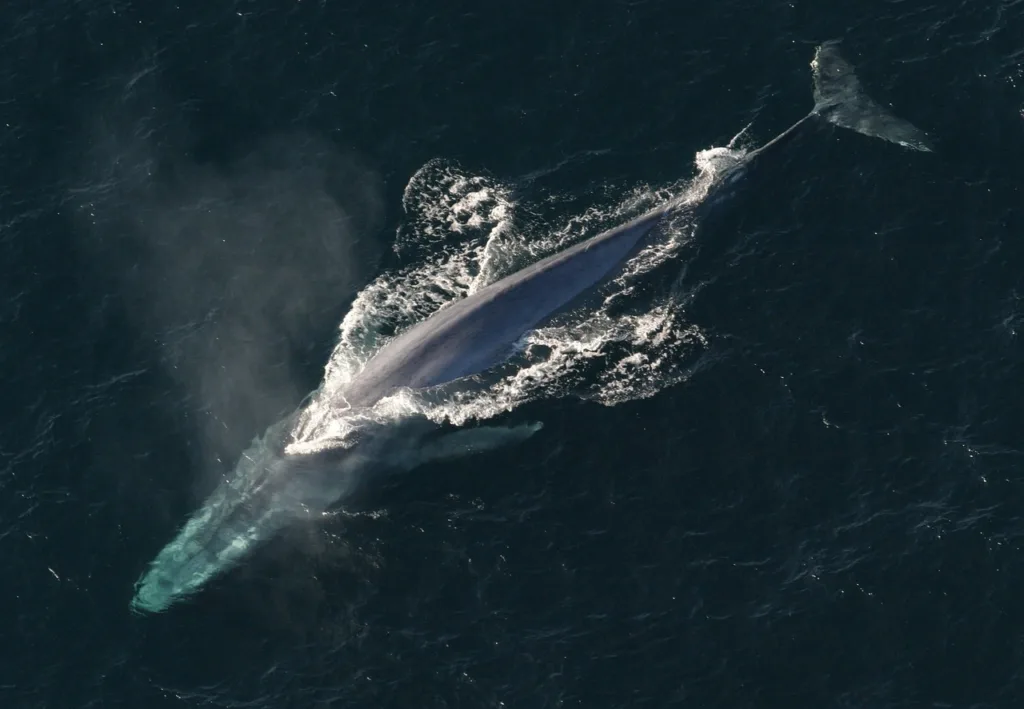
3.1. Spring (May and June):
Spring is an exciting time for whale watching in Newfoundland and Labrador. As the ice melts, humpbacks journey from the Caribbean to the rich feeding grounds of the north. This season offers opportunities to witness breaching, tail-slapping, and bubble-net feeding.
3.2. Summer (July and August):
Summer brings warmer weather and an abundance of marine life to the region. Humpback whales can be seen feeding near shore, while orcas and minke whales are also spotted in more significant numbers. The long daylight hours provide ample time for extended whale-watching excursions.
3.3. Fall (September and October)
The End of summer marks the end of the whale watching season in Newfoundland and Labrador. The whales start their southern migration, often accompanied by their newborn calves.
Conservation and Responsible Whale Watching
Whale watching should always be done responsibly and sustainably. It is essential to follow guidelines and regulations to ensure the well-being and preservation of these majestic creatures.
Newfoundland and Labrador offer unparalleled opportunities for whale watching enthusiasts. With its diverse whale populations, breathtaking coastal landscapes, and rich cultural heritage, Newfoundland and Labrador is a haven for nature lovers. Following the recommended spots and seasons and practicing responsible whale watching, you can embark on an extraordinary adventure that will leave you in awe of these majestic creatures. So, pack your binoculars, camera, and sense of wonder, and prepare for an unforgettable journey into the world of whales in Newfoundland and Labrador.
What is the best month to see whales in Newfoundland?
The best months to see whales in Newfoundland are June through August. During this period, whale species, including humpbacks, migrate to the region’s rich feeding grounds.
When can you see whales and icebergs in Newfoundland?
The optimal time to see whales and icebergs in Newfoundland is from late May to early July. Icebergs typically peak in May and June, while whale sightings become more frequent from June onwards.
What time of day are whales most active?
Whales are generally most active during the early morning and late afternoon. However, whale activity can vary, and sightings are possible throughout the day.
Where to see humpback whales in Newfoundland?
Humpback whales can be seen in several locations around Newfoundland, with top spots including Trinity Bay, Witless Bay Ecological Reserve, and St. John’s. These areas are known for their high concentrations of humpbacks during the summer months.
Is it better to go whale watching in the morning or at noon?
Morning is typically the best time for whale watching. The calmer seas and lower morning light conditions can make it easier to spot whales and ensure a more comfortable experience on the water.
What months are whales most active?
Whales are most active in Newfoundland from June to August. During these months, numerous species, including humpbacks, minke whales, and orcas, are commonly spotted in the region’s waters.
How many days do you need in Newfoundland?
To fully experience Newfoundland’s attractions, including whale watching, puffin viewing, and exploring the natural landscapes, a visit of at least 7 to 10 days is recommended. This allows ample time to see multiple regions and partake in various activities.
When can you see whales and puffins in Newfoundland?
You can see whales and puffins in Newfoundland from mid-May to early September. Puffins are particularly abundant during their nesting season from late May to August, coinciding with the peak whale-watching months.
What is the best time of year to go to Newfoundland?
The best time of year to visit Newfoundland is from June to September. This period offers the most favourable weather for outdoor activities, including whale watching, hiking, and bird watching.
What are the chances of seeing a whale while whale watching?
The chances of seeing a whale while on a whale-watching tour in Newfoundland are high, often exceeding 90% during peak season. Tour operators are skilled at locating whale activity, ensuring a high success rate.
What weather is best for whale watching?
Calm, clear weather is best for whale watching. Calm seas provide a smoother ride, making spotting whale activity on the water’s surface easier. Clear skies also enhance visibility for spotting whales from a distance.
Where do whales go at night?
Whales typically remain in their feeding or resting areas at night. They do not sleep like land mammals. Instead, they rest one hemisphere of their brain at a time. This allows whales to remain aware of their surroundings.
What months are whale watching?
Whale watching in Newfoundland is best from June to September, coinciding with the whales’ feeding migration to the region’s rich waters.
Does the time of day matter for whale watching?
Yes, the time of day can matter. Early mornings and late afternoons are often the best times for whale watching due to favourable lighting and sea conditions.
How often do whales wash up on beaches?
Whales washing up on beaches, known as strandings, are relatively rare occurrences. While occasional strandings happen, they are not expected and are often due to illness, navigational errors, or other factors.
Can you see whales in Gros Morne National Park?
While Gros Morne National Park is more famous for its stunning landscapes, whale watching is possible in nearby coastal areas. Boat tours from nearby towns, such as Rocky Harbour, offer opportunities to see whales.
Are there narwhals in Newfoundland?
Narwhals are typically found in Arctic waters and are not commonly seen in Newfoundland. The seas around Newfoundland are more frequented by humpback, minke, and orca whales.
What to wear on a whale-watching tour in Newfoundland?
Dress in layers to prepare for variable weather conditions. A waterproof jacket, warm clothing, a hat, gloves, and non-slip shoes are recommended. Even in summer, temperatures in the water can be extraordinary.
Should I eat before whale watching?
Eating a light meal before watching a whale is advisable, especially if you are prone to seasickness. Avoid heavy or greasy foods and consider taking seasickness medication if necessary.
Is whale watching worth it in the rain?
Whale watching can still be worth it in the rain, as whales are not deterred by wet weather. However, rough seas can make the experience less comfortable, so check the weather forecast and sea conditions.
What is the best time of day to go whale watching in Canada?
Early morning is generally the best time for whale watching in Canada, including Newfoundland. The calm seas and favourable light conditions make it easier to spot whales.
Do whales travel at night?
Yes, whales do travel at night. They continue their normal activities, including feeding and migrating, regardless of the time of day.
Do whales give birth every year?
Most large whale species, such as humpbacks, do not give birth yearly. They typically have a breeding cycle of one calf every two to three years.
What time of year are baby whales born?
Baby whales, or calves, are usually born in the winter months. Humpbacks, for instance, give birth in warmer waters, such as those in the Caribbean, and migrate to feeding grounds like Newfoundland in the summer with their calves.
When is the best time to see puffins in NL Newfoundland?
The best time to see puffins in Newfoundland is from late May to early September. During this period, puffins come to breed on coastal cliffs and islands, with peak activity in June and July.
Where can I see puffin in Newfoundland?
The Witless Bay Ecological Reserve, Elliston, and the Cape Bonavista Peninsula are the top locations to see puffins in Newfoundland. These areas are known for large puffin colonies during the breeding season.
Is there whale watching in Newfoundland in May?
Yes, whale-watching tours typically start in Newfoundland in May. While sightings may be less frequent early in the month, whales are commonly seen by late May as they migrate into the area.
Should I bring binoculars for whale watching?
Bringing binoculars is a good idea for whale watching, as they can enhance your ability to spot whales and other marine life at a distance. They also allow for better viewing of birds and coastal scenery.
What do you do if you see a whale in the water?
If you see a whale in the water, remain calm and enjoy the experience from a safe distance. Avoid sudden movements and any loud noises that could startle the whale.
How safe is whale watching?
Whale watching is generally very safe, mainly by reputable tour operators who follow safety guidelines and regulations. Always listen to the crew’s instructions and wear a life jacket if provided.
Travelling to Newfoundland and Labrador. Travelers also ask.
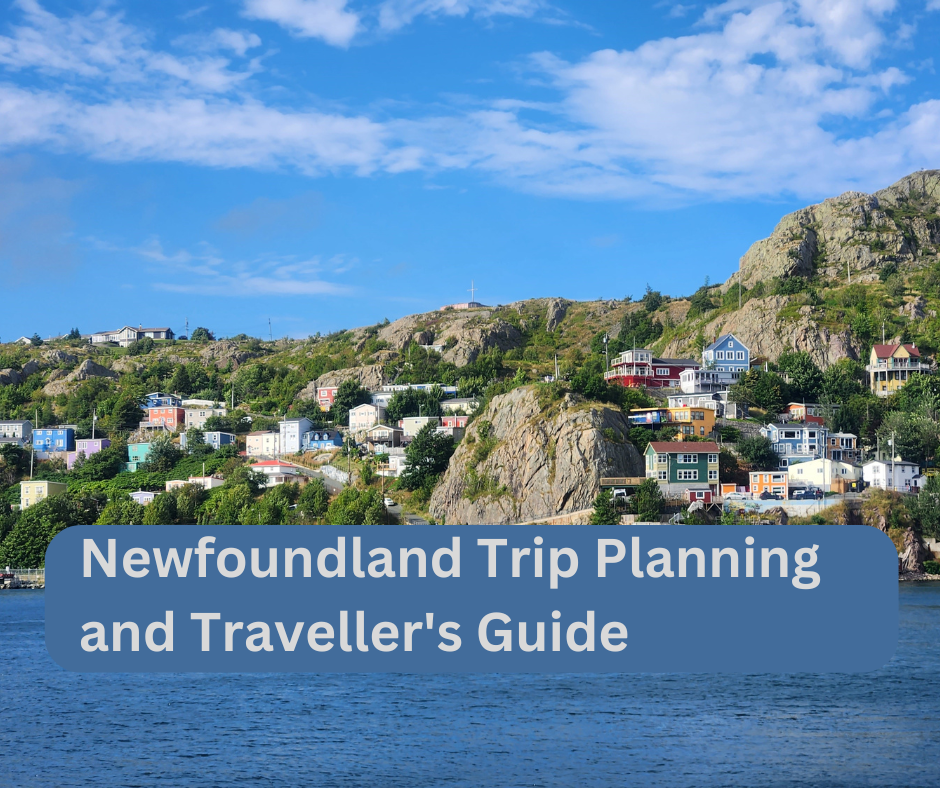
Is St. John’s, Newfoundland, worth visiting?
St. John’s, the capital, is worth visiting. St. John’s offers a rich cultural heritage, a vibrant arts scene, and breathtaking natural landscapes. Known for its colourful row houses, historic sites like Signal Hill, and picturesque harbour, St. John’s provides a unique blend of natural beauty. The city’s friendly locals, lively music scene, and excellent seafood add to its charm, making it a must-visit destination.
What is St. John’s, Newfoundland, famous for?
St. John’s is famous for several things:
- Signal Hill: This historic site offers panoramic views, and the Cabot Tower is where the first transatlantic wireless communication was received.
- George Street is renowned for its nightlife, with the most bars and pubs per capita in North America.
- Colourful Row Houses: Known as Jellybean Row, these brightly painted homes are iconic.
- Rich History: As one of the oldest cities in North America, it has a rich maritime history and cultural heritage.
How many days does it take to visit St. John’s, Newfoundland?
To fully experience St. John’s and its surroundings, a visit of 4 to 5 days is recommended. This allows time to explore the city’s historical sites, enjoy the local cuisine, enjoy the nightlife on George Street, and venture out to nearby natural attractions such as Cape Spear and Quidi Vidi Village.
Is St. John’s, Newfoundland, a walkable city?
Yes, St. John’s is a walkable city, especially in the downtown area, where many attractions, restaurants, and shops are concentrated. The city’s hilly terrain can be challenging, but it also offers beautiful vistas and charming streets to explore on foot.
What is the best month to visit Newfoundland?
The best months to visit Newfoundland are from late June to early September. The weather is milder during this period, and you can enjoy outdoor activities like hiking, whale watching, and iceberg spotting. July and August are viral for tourists.
What is the best time of year to visit St. John’s, Newfoundland?
The best time to visit St. John’s is during the summer, from June to early September, during this this time the weather is warm and many festivals and events occur. This is also the peak season for whale-watching and iceberg viewing.
Is St. John’s Newfoundland expensive?
St. John’s can be moderately expensive, especially during peak tourist season. Accommodation, dining, and activities can add up, but budget-friendly options are also available. Compared to larger Canadian cities, St. John’s is relatively affordable.
Is Newfoundland expensive to visit?
Newfoundland is not excessively expensive to visit, but costs can vary depending on the time of year and type of accommodation. While certain activities and dining experiences may be costly, there are plenty of free or low-cost activities to enjoy.
What is the famous street in St. John’s, Newfoundland?
George Street is famous in St. John’s for its vibrant nightlife and numerous bars and pubs. George Street is a popular spot for locals and tourists looking to experience live music and socialize.
Can you get around St. John’s without a car?
Yes, you can get around St. John’s without a car, especially downtown, where many attractions are within walking distance. You’ll have access to convenient transportation options, such as public transportation, taxis, and ride-sharing services.
How long is the ferry ride from Nova Scotia to St. John’s, Newfoundland?
There is no direct ferry to St. John’s. However, you can take a ferry from North Sydney, Nova Scotia, to either Argentia (a 16-hour ride) or Port aux Basques (a 6–8-hour ride) in Newfoundland. From there, you must drive to St. John’s, which takes approximately 1.5 hours from Argentia or 9 hours from Port aux Basques.
How long does it take to drive around St. John’s?
Driving around St. John’s can take about an hour, depending on traffic and stops. Exploring the greater St. John’s area, including nearby attractions like Cape Spear and Quidi Vidi, can take several hours.
What is the crime rate in St. John’s, Newfoundland?
St. John’s has a relatively low crime rate compared to other Canadian cities. While it experiences typical urban crime, it is generally considered a safe place for residents and visitors.
How cheap is Newfoundland?
Newfoundland is relatively affordable compared to other parts of Canada. While some areas, especially St. John’s, can be expensive, smaller towns and rural areas, however, offer more budget-friendly options for accommodation and dining.
What is the best way to tour Newfoundland?
The best way to tour Newfoundland is by car. This allows you to explore the island’s diverse landscapes, remote villages, and natural attractions at your own pace. Renting a car is recommended if you’re flying into the province.
In what month do you see icebergs in Newfoundland?
Iceberg season in Newfoundland typically runs from late May to early June, though icebergs can sometimes be seen as late as July. The best month for iceberg viewing is usually June.
What is the best month to see icebergs in Newfoundland?
June is generally the best month to see icebergs in Newfoundland. This is when most icebergs drift along the coast, providing spectacular viewing opportunities.
When can I see puffins in Newfoundland?
Puffins can be seen in Newfoundland from late May to early September. The best months to see them are June and July when they are most active during their breeding season.
What is the wettest month in Newfoundland?
October is typically the wettest month in Newfoundland, and it experiences the highest average rainfall.
When can you see whales in St John’s, Newfoundland?
Whale-watching season in St. John’s is from mid-June to mid-August. During this time, humpback, minke, and other whale species migrate through the waters of Newfoundland.
What should I pack for St. John’s, Newfoundland?
When visiting St. John’s, pack layers to accommodate varying weather conditions. Essentials include:
- Waterproof jacket and footwear
- Warm clothing (sweaters, hats, gloves)
- Comfortable walking shoes
- Sunscreen and sunglasses
- Cameras and binoculars for wildlife and iceberg viewing
Can you see the Northern Lights from Newfoundland?
You can watch the Northern Lights (Aurora Borealis) from Newfoundland, particularly in low-light pollution areas. The best time to see them is from late fall to early spring.
Where is the best place to see whales and icebergs in Newfoundland?
Twillingate and Bonavista are Newfoundland best places to see whales and icebergs. These coastal areas offer excellent viewing opportunities and tours.
Are there polar bears in Newfoundland?
Polar bears are occasionally seen in the northern parts of Newfoundland and Labrador, particularly in the Labrador region. They are not commonly found in Newfoundland itself.
How long does it take to drive from one end of Newfoundland to the other?
Driving from the western end of Newfoundland (Port aux Basques) to the eastern end (St. John’s) takes approximately 9–10 hours without significant stops.
Is Fogo Island worth visiting?
Fogo Island is worth visiting for its unique culture, stunning landscapes, and renowned Fogo Island Inn. It offers a distinctive experience of Newfoundland’s heritage and natural beauty.
How often can you see northern lights in Newfoundland?
The Northern Lights can be seen in Newfoundland several times a year, particularly during periods of high solar activity. The best times are during winter when nights are longer and darker.
What is the best time to see the Northern Lights?
The best time to see the Northern Lights is during the winter, from late September to early April, particularly around midnight or early morning.
How long is the ferry ride to Fogo?
The ferry ride to Fogo Island from Farewell, Newfoundland, takes approximately 45 minutes to an hour.
How much is the ferry to Fogo Island?
As of the latest information, the ferry to Fogo Island costs around $15–20 CAD per vehicle and additional fees for passengers, but prices can vary, so it’s best to check current rates.
What is so special about Fogo Island?
Fogo Island is unique for its rugged natural beauty, traditional outport culture, and the acclaimed Fogo Island Inn. It’s known for its artistic community, distinctive architecture, and stunning coastal Scenery.
Are there narwhals in Newfoundland?
Narwhals are typically found in Arctic waters and are uncommon in Newfoundland.
Are there dolphins in Newfoundland?
Yes, dolphins can be seen in the waters around Newfoundland, including species like the Atlantic white-sided dolphin and the common dolphin.
Are there killer whales in Newfoundland?
Killer whales (orcas) are occasionally sighted around Newfoundland, especially during summer.
What is Cape Spear known for?
Cape Spear is known for being the easternmost point in North America. It features a historic lighthouse and offers stunning 180-degree views of the Atlantic Ocean, making it a popular tourist spot.
Where can I see whales in Newfoundland?
Some of the best places to see whales in Newfoundland include:
- St. John’s and Cape Spear
- Trinity and Bonavista
- Twillingate
- Witless Bay Ecological Reserve
How do you see puffins in St John’s?
To see puffins near St. John’s, visit the Witless Bay Ecological Reserve island, which is home to large colonies of puffins. Boat tours from Bay Bulls can take you close to the puffin nesting sites.
How long do you need to see Newfoundland?
Plan to spend at least 7–19 days to see Newfoundland highlights. This allows enough time to explore St. John’s, the Avalon Peninsula, Gros Morne National Park, and other key attractions.
When should I go to Newfoundland?
The best time to visit Newfoundland is from late June to early September when the weather is mild. You can enjoy outdoor activities, events, and festivals. This period is also ideal for whale-watching and iceberg-viewing.
These are the best travel planning resources you should use.
Looking to book your trip to Newfoundland and Labrador? Use these resources that are tried and tested by other travellers like you who vacation in Newfoundland and Labrador. Bookmark these links. Save them for future reference.
Booking Flights, Hotels or B&B: Start planning your next vacation trip by finding the best flight, hotel or b&b deals. Book Here
Finding things to do in Newfoundland and Labrador on TripAdvisor and Viator is not hard. Enjoy boat tours, whale watching, icebergs watching, kayaking and other activities.
You can also find low prices on hotels, B&B and cabins with these two providers. If you are located in Canada, the USA, the UK or Europe, use Booking.com, and if you are in Canada, the USA or anywhere else, use TripAdvisor.
Car Rental: Here is what we recommend:
When you book with Rentalcars.com, you can compare prices and find the best vehicle for your trip. Economybookings.com Display all their vehicle on the website with a detailed description. They display high-quality photos and a user rating as well. Qeeq.com serves road trip travellers like you from different countries by working with car rental companies worldwide.
Get compensated if your flight is delayed or cancel
AirHelp and Compensateair will help you with flight delays, cancellations, or denied boarding. All you need to do is to submit your flight details, and they will handle the claim process on your behalf. They will handle all the paperwork, airline negotiations, and legal proceedings.
Do you need more help planning your trip?
Check out our Resources Page, where we highlight all the resources and companies you can use to assist with your planning.
